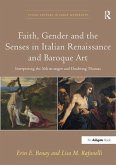Prints changed the history of art, even as that history was first being written. In this study, Sharon Gregory argues that this reality was not lost on Vasari; she shows that, contrary to common opinion, prints thoroughly pervade Vasari's history of art, just as they pervade his own career as an artist. This volume examines Giorgio Vasari's interest, as an art historian and as an artist, in engravings and woodblock prints, shedding new light not only on aspects of Vasari's career, but also on aspects of sixteenth-century artistic culture and artistic practice. It is the first book to study his interest in prints from this dual perspective. Investigating how prints were themselves more often interpretive than strictly reproductive, Gregory challenges the long-held view that Vasari's reliance on prints led to errors in his interpretation of major monuments. She demonstrates how, like Raphael and later artists, Vasari used engravings after his designs as a form of advertisementthrough which he hoped to increase his fame and attract influential patrons. She also explores how contributing illustrations for books by his scholarly friends, Vasari participated in the contemporary exchange of intellectual ideas and concerns shared by Renaissance humanists and artists.
Prize: Honorable Mention for the IFPDA Book Award, 2013
A Yankee Book Peddler US Core Title for 2012
Highly Commended: SRS Book Prize 2014
'... an exemplary piece of scholarship, deeply considered and scrupulously documented, that will be of interest to curators and historians and literary scholars alike. The first focus here concerns the many uses Vasari made of the prints both for his own artistic production and then for the accounts of those artists included in his text The Lives whose work he knew from evidence such as this. But Gregory also lays out here a fascinating and carefully grounded account of the dissemination of visual materials in this first moment of printing and the ways prints could become a vital part of the larger culture. It is rare to find a study on these subjects that is so sure of its details yet manages also to move beyond them to offer original insights and conclusions.' David Cast, Bryn Mawr College; author of The Delight of Art: Giorgio Vasari and the Traditions of Humanist Discourse
'This well-researched and well-structured book examines a number of different aspects of its subject... This very welcome book opens up many perspectives beyond its immediate subject.' The Burlington Magazine
'... an ordinary reader with a passing knowledge of Italian Renaissance art will find much of interest in this new book... these essays form a clear, well-sourced analysis of the role of prints in the Renaissance artist's studio.' The Art Newspaper
'This clearly written, well-researched, and intelligently structured book will remain a fundamental point of reference for all those interested in the history of printmaking as well as in Vasari's fundamental contribution to art history.' Renaissance Quarterly
'[Gregory's] very wide-ranging and clearly written text is a valuable source of evidence and ideas for anyone interested in theVite, or for the use of prints in Renaissance workshops.' Print Quarterly
'Throughout Vasari and the Renaissance Print the author displays an admirable depth of knowledge with fascinating statistics, such as ... the history of prints, Vasari, Florentine history, and print culture in early modern Europe.' Sixteenth Century Studies Journal
'The book is the product of many years of serious scholarship and is exactly the sort of work that justifies what academics do in opening up the archive for others to understand and use and which makes being part of the profession a pleasure.' Society for Renaissance Studies
'Mit ihrer klaren Gliederung, der umfassenden Aufarbeitung historischer Quellen und den zahlreichen brillanten Abbildungen ist diese Studie nicht nur ein grosser Gewinn fur das Studium der Renaissancedruckgrafik, sondern uberdies zu weiten Teilen vergnuglich und flussig zu lesen.' Sehepunkte
A Yankee Book Peddler US Core Title for 2012
Highly Commended: SRS Book Prize 2014
'... an exemplary piece of scholarship, deeply considered and scrupulously documented, that will be of interest to curators and historians and literary scholars alike. The first focus here concerns the many uses Vasari made of the prints both for his own artistic production and then for the accounts of those artists included in his text The Lives whose work he knew from evidence such as this. But Gregory also lays out here a fascinating and carefully grounded account of the dissemination of visual materials in this first moment of printing and the ways prints could become a vital part of the larger culture. It is rare to find a study on these subjects that is so sure of its details yet manages also to move beyond them to offer original insights and conclusions.' David Cast, Bryn Mawr College; author of The Delight of Art: Giorgio Vasari and the Traditions of Humanist Discourse
'This well-researched and well-structured book examines a number of different aspects of its subject... This very welcome book opens up many perspectives beyond its immediate subject.' The Burlington Magazine
'... an ordinary reader with a passing knowledge of Italian Renaissance art will find much of interest in this new book... these essays form a clear, well-sourced analysis of the role of prints in the Renaissance artist's studio.' The Art Newspaper
'This clearly written, well-researched, and intelligently structured book will remain a fundamental point of reference for all those interested in the history of printmaking as well as in Vasari's fundamental contribution to art history.' Renaissance Quarterly
'[Gregory's] very wide-ranging and clearly written text is a valuable source of evidence and ideas for anyone interested in theVite, or for the use of prints in Renaissance workshops.' Print Quarterly
'Throughout Vasari and the Renaissance Print the author displays an admirable depth of knowledge with fascinating statistics, such as ... the history of prints, Vasari, Florentine history, and print culture in early modern Europe.' Sixteenth Century Studies Journal
'The book is the product of many years of serious scholarship and is exactly the sort of work that justifies what academics do in opening up the archive for others to understand and use and which makes being part of the profession a pleasure.' Society for Renaissance Studies
'Mit ihrer klaren Gliederung, der umfassenden Aufarbeitung historischer Quellen und den zahlreichen brillanten Abbildungen ist diese Studie nicht nur ein grosser Gewinn fur das Studium der Renaissancedruckgrafik, sondern uberdies zu weiten Teilen vergnuglich und flussig zu lesen.' Sehepunkte








